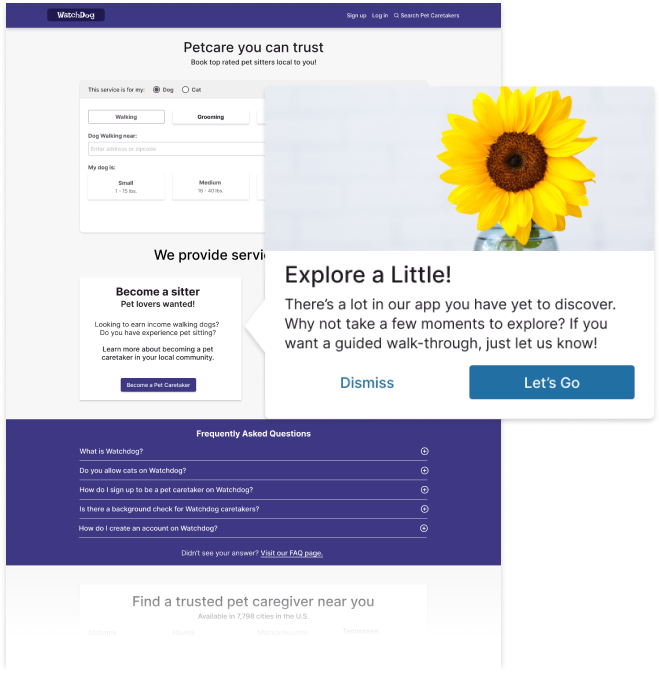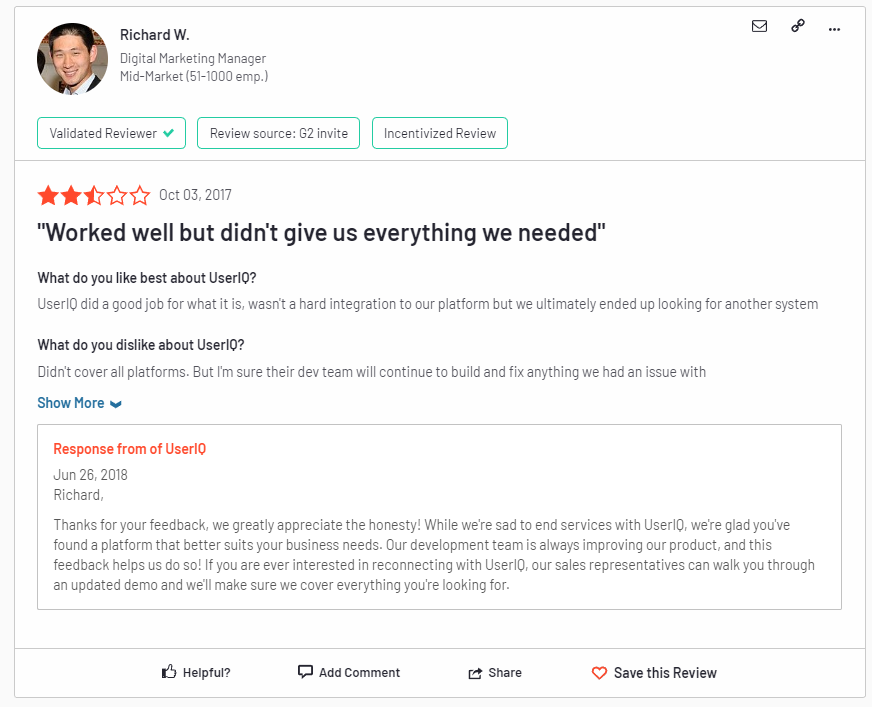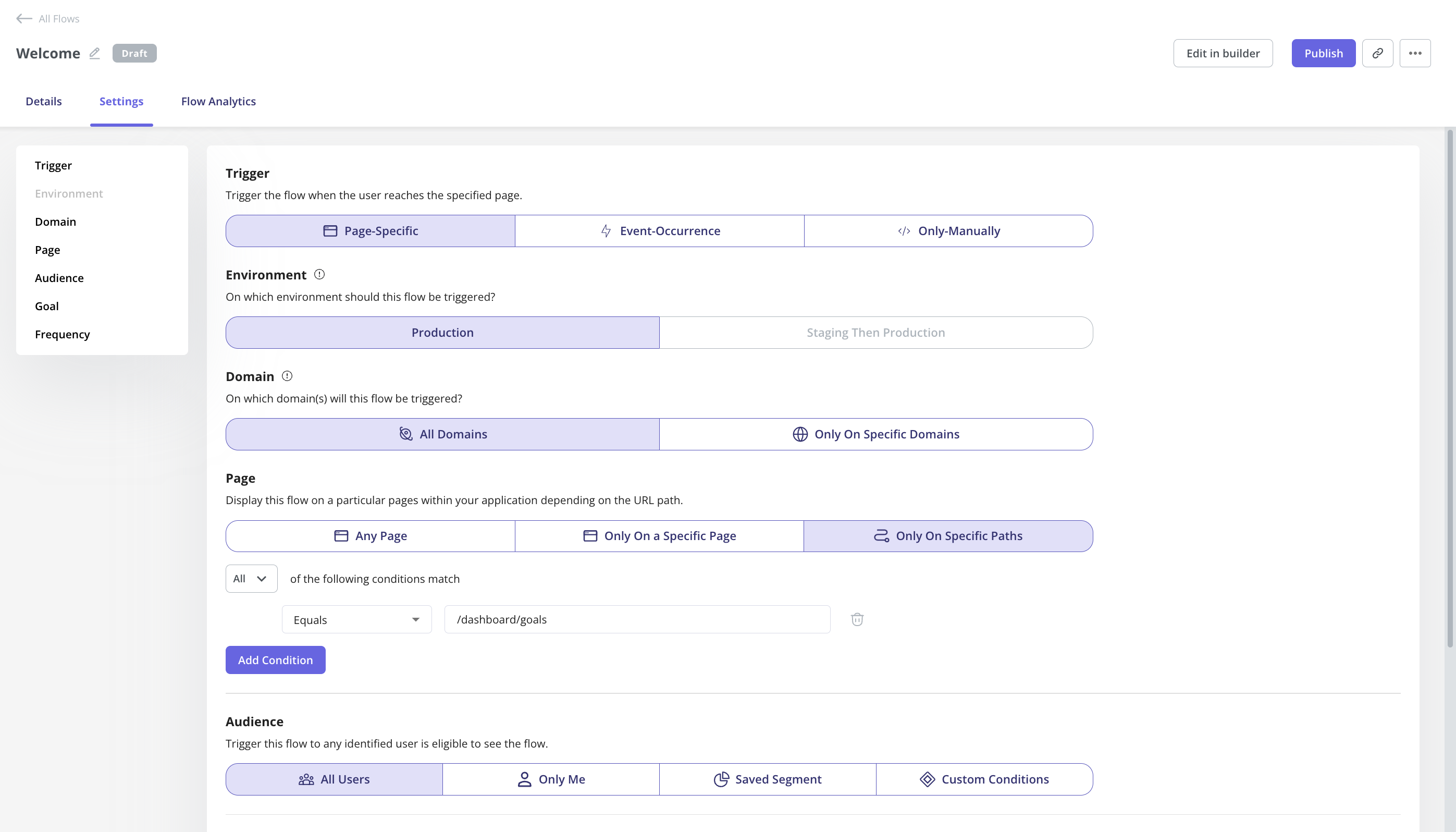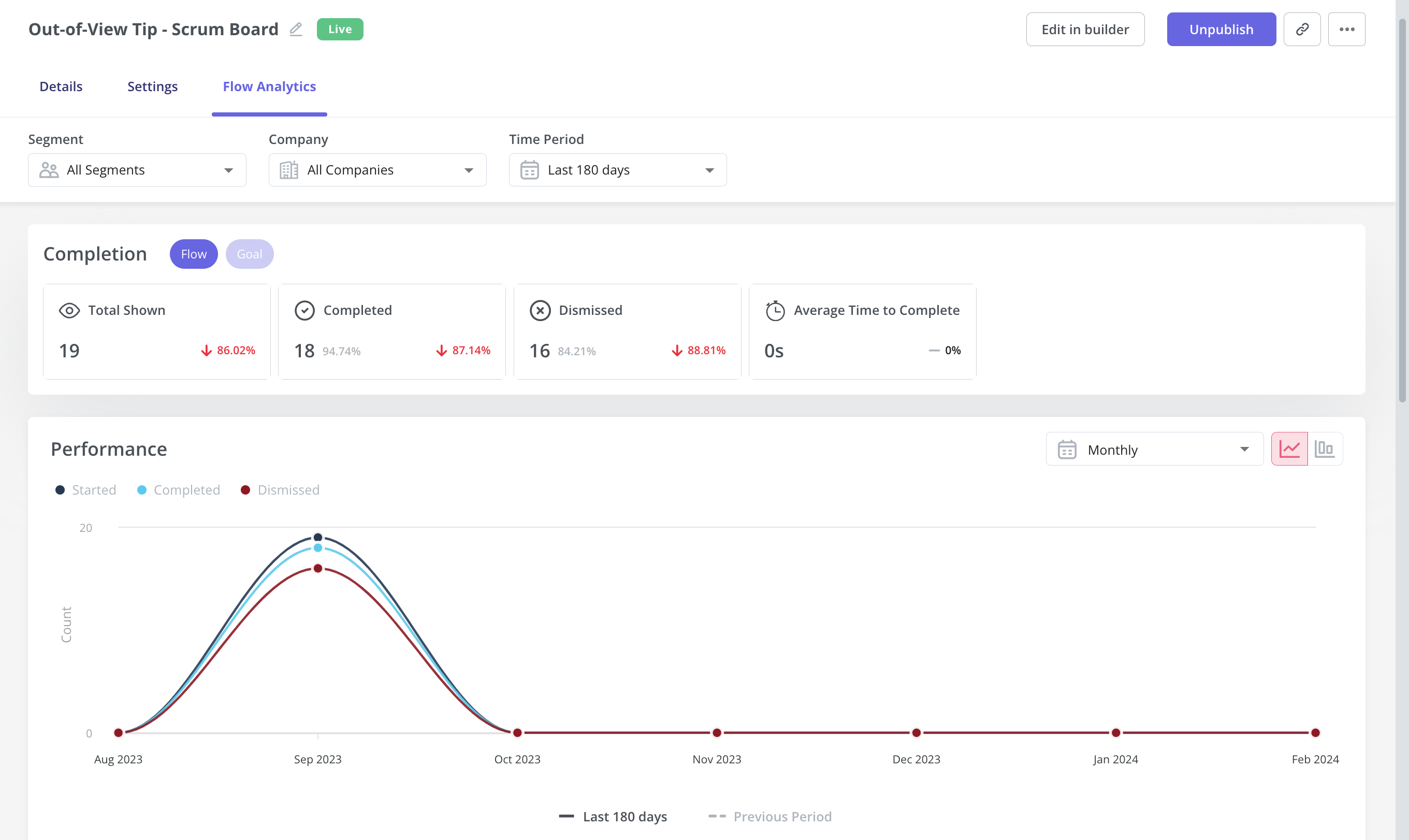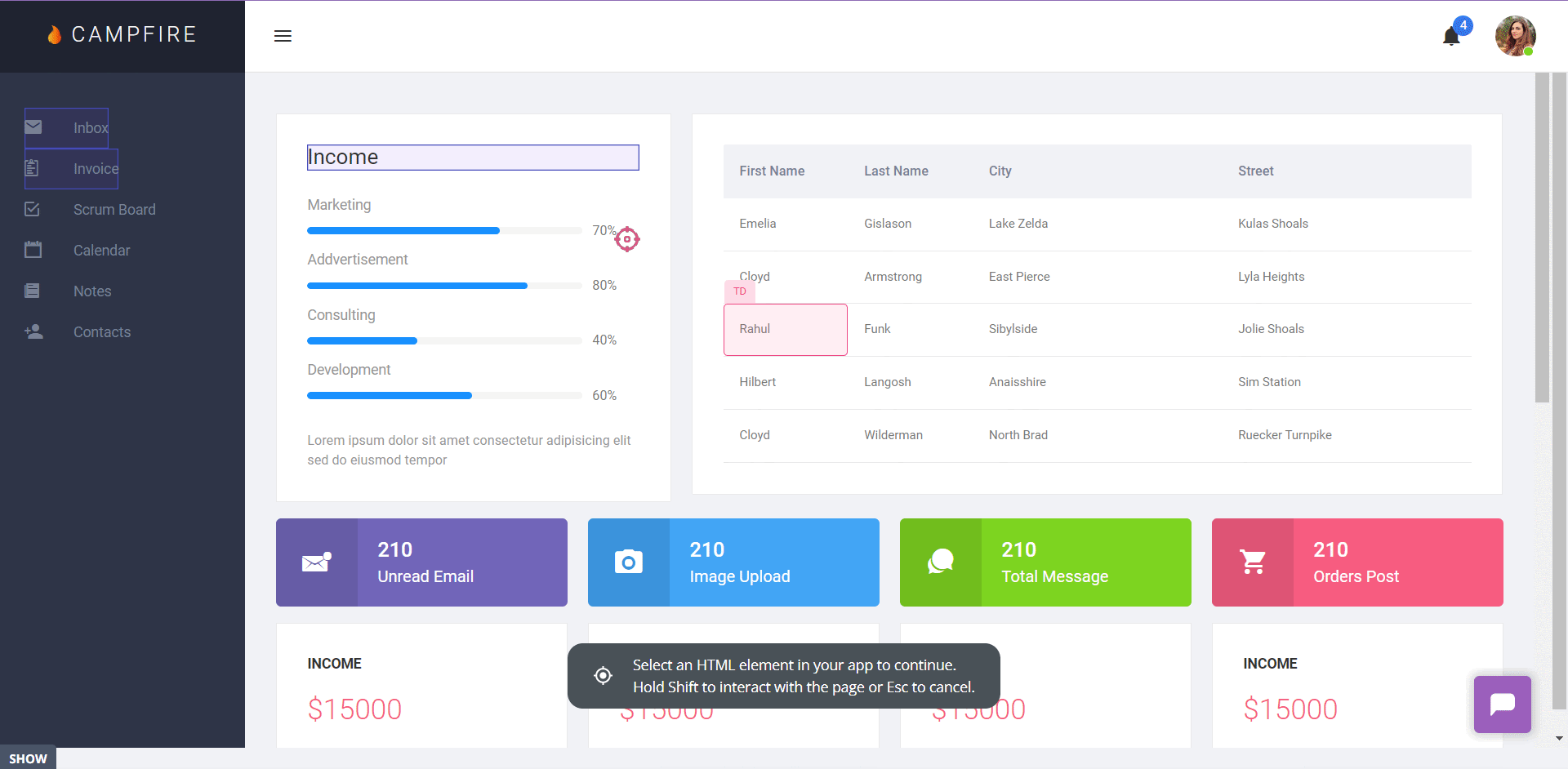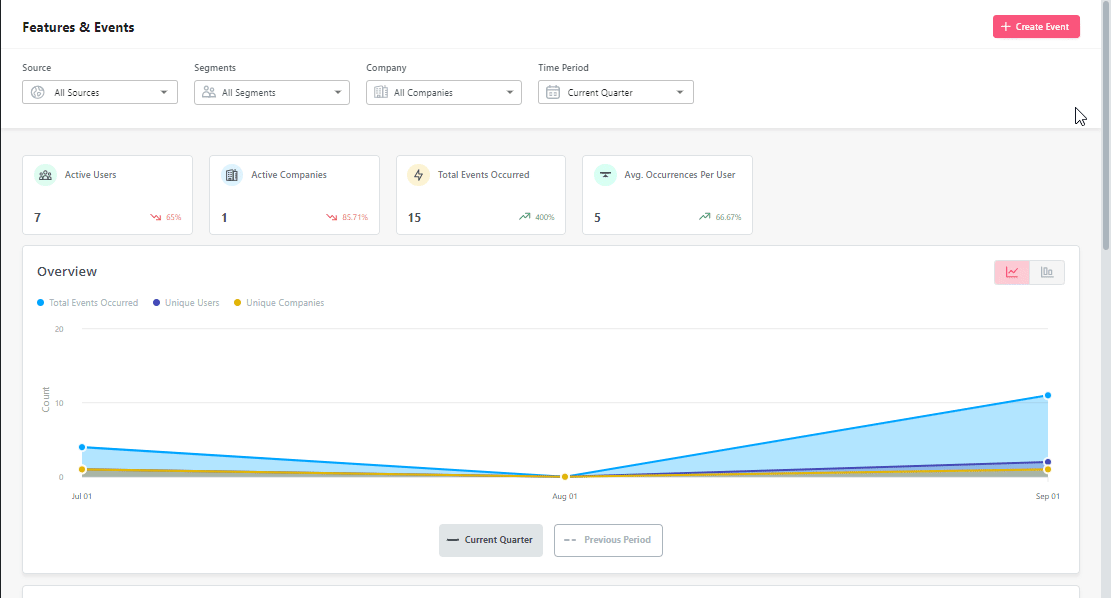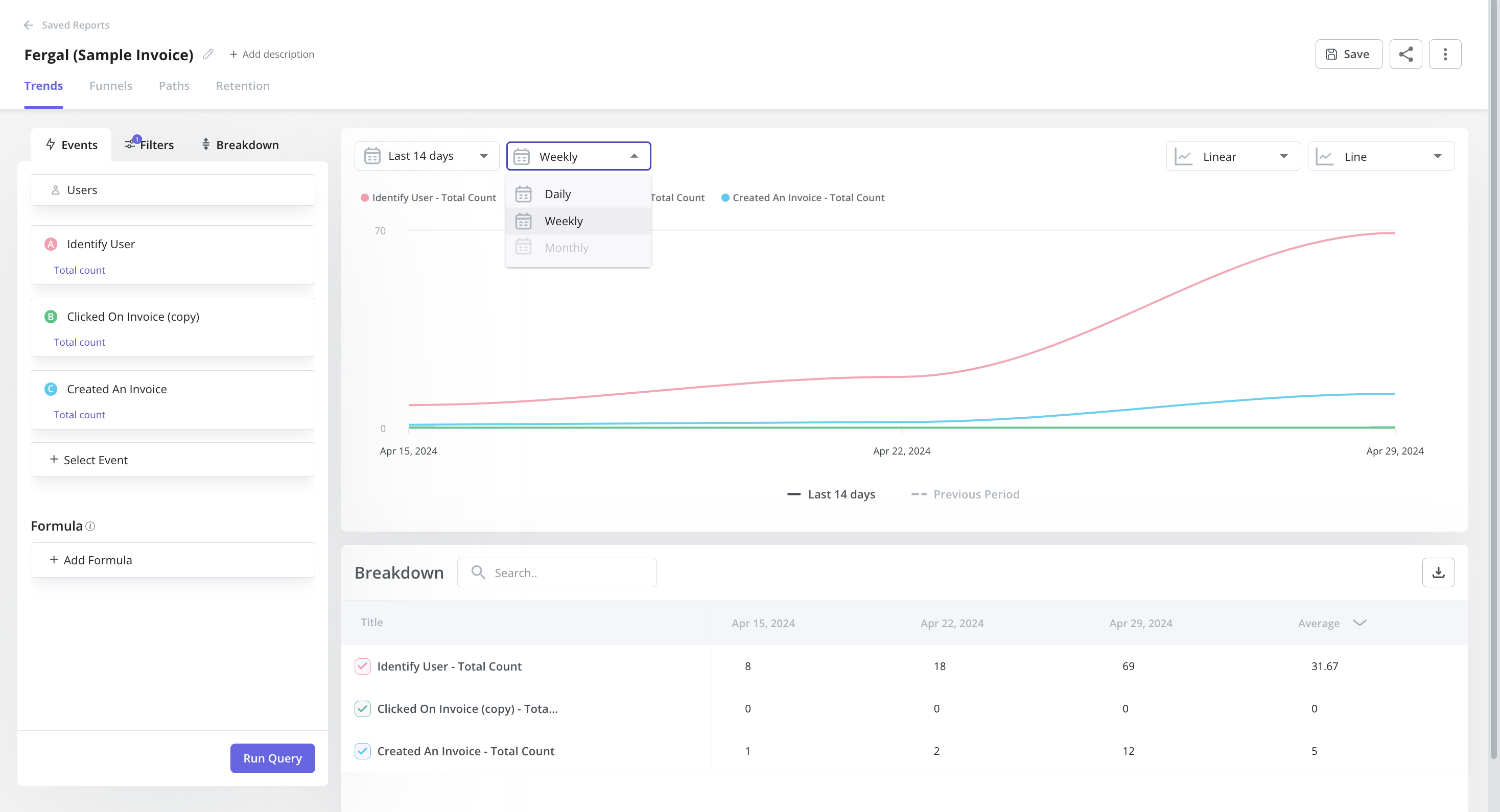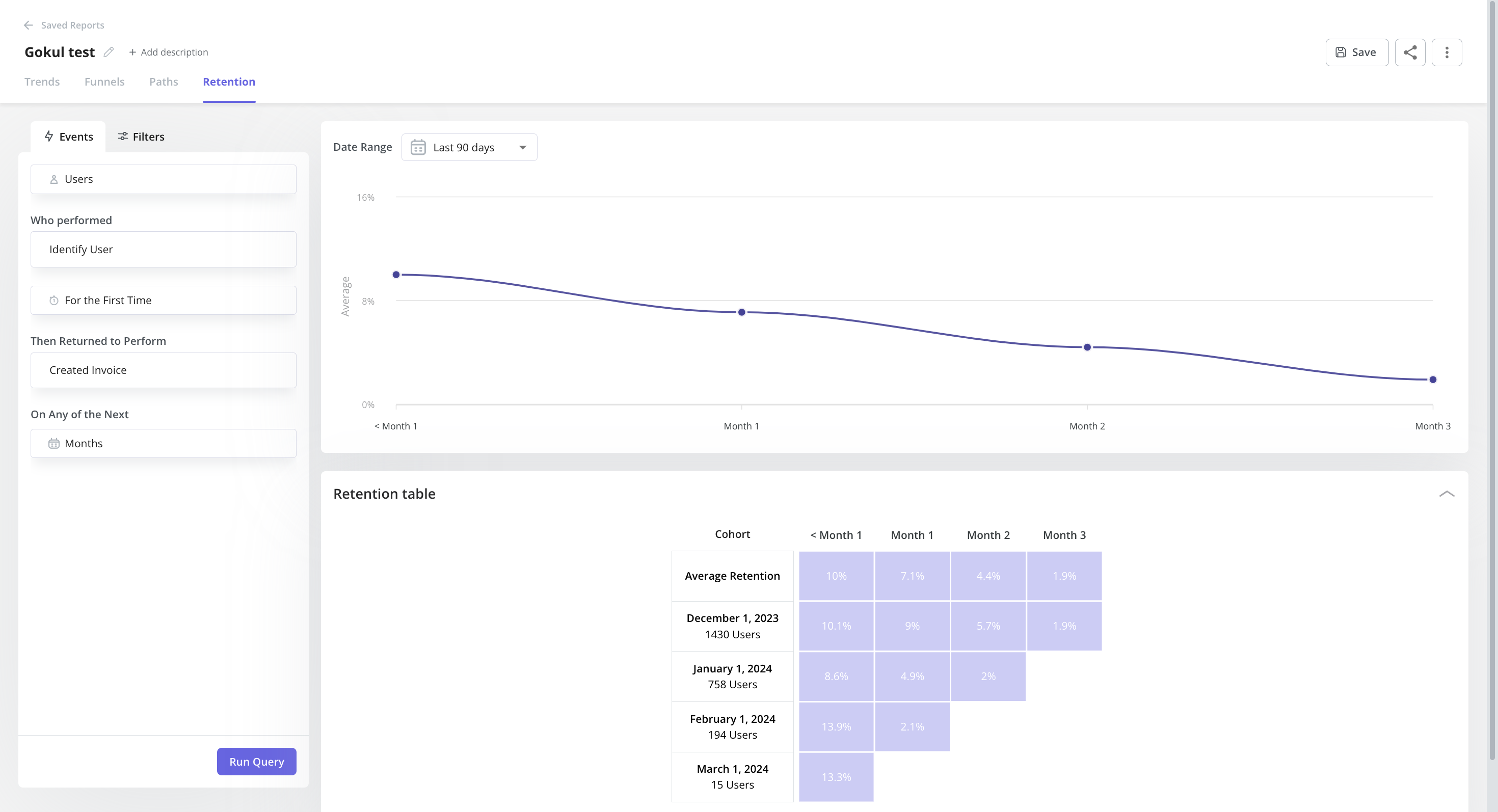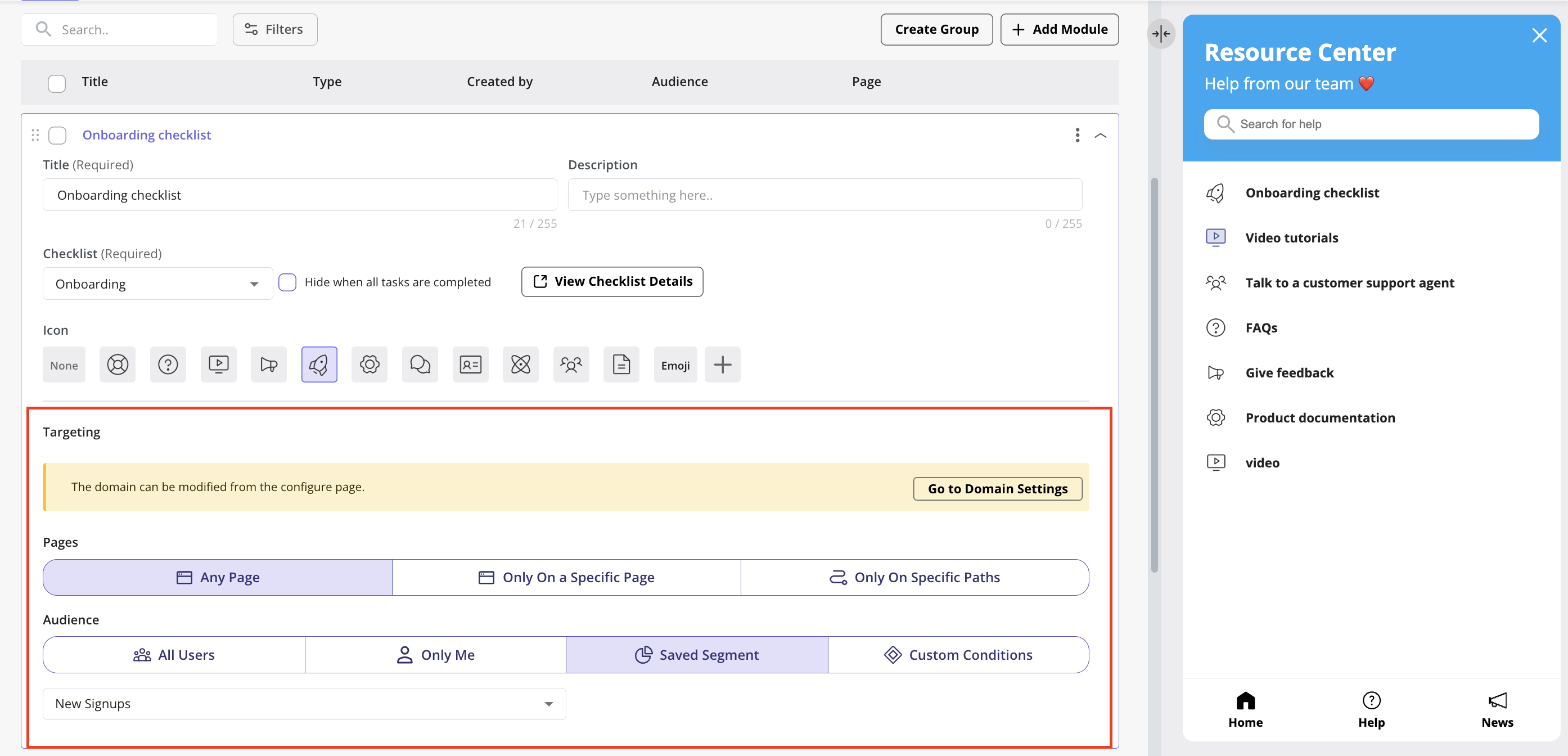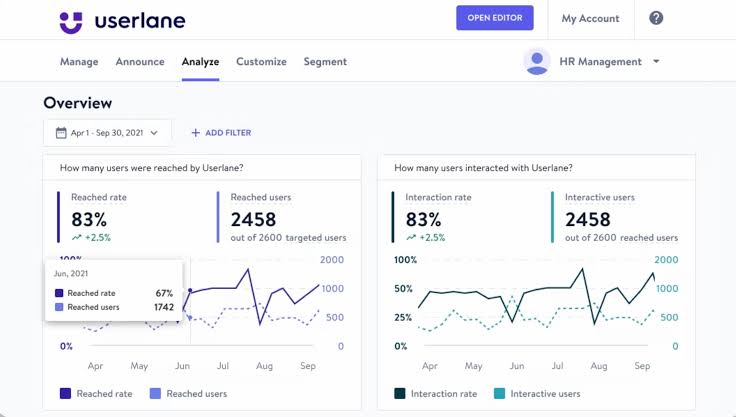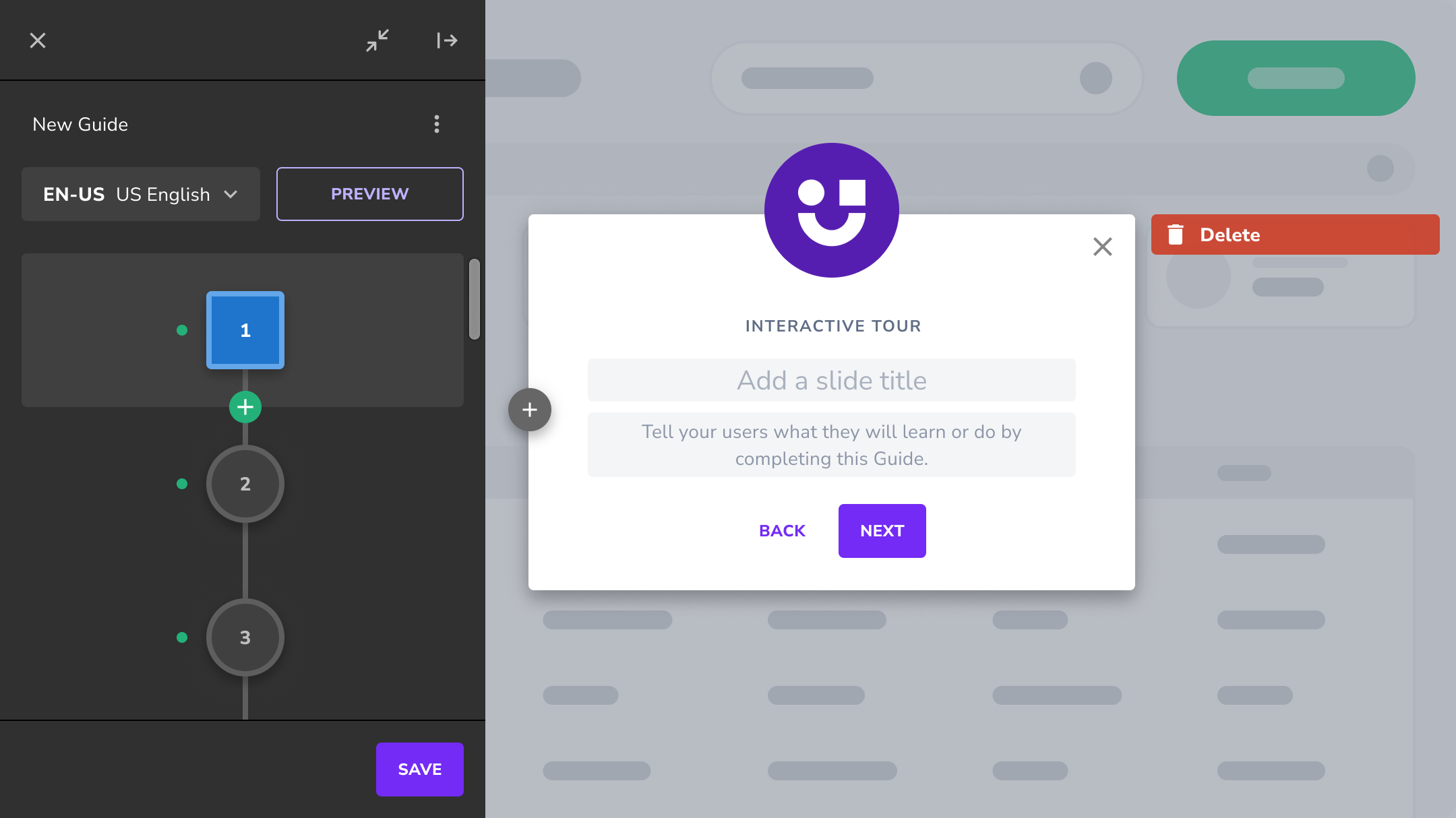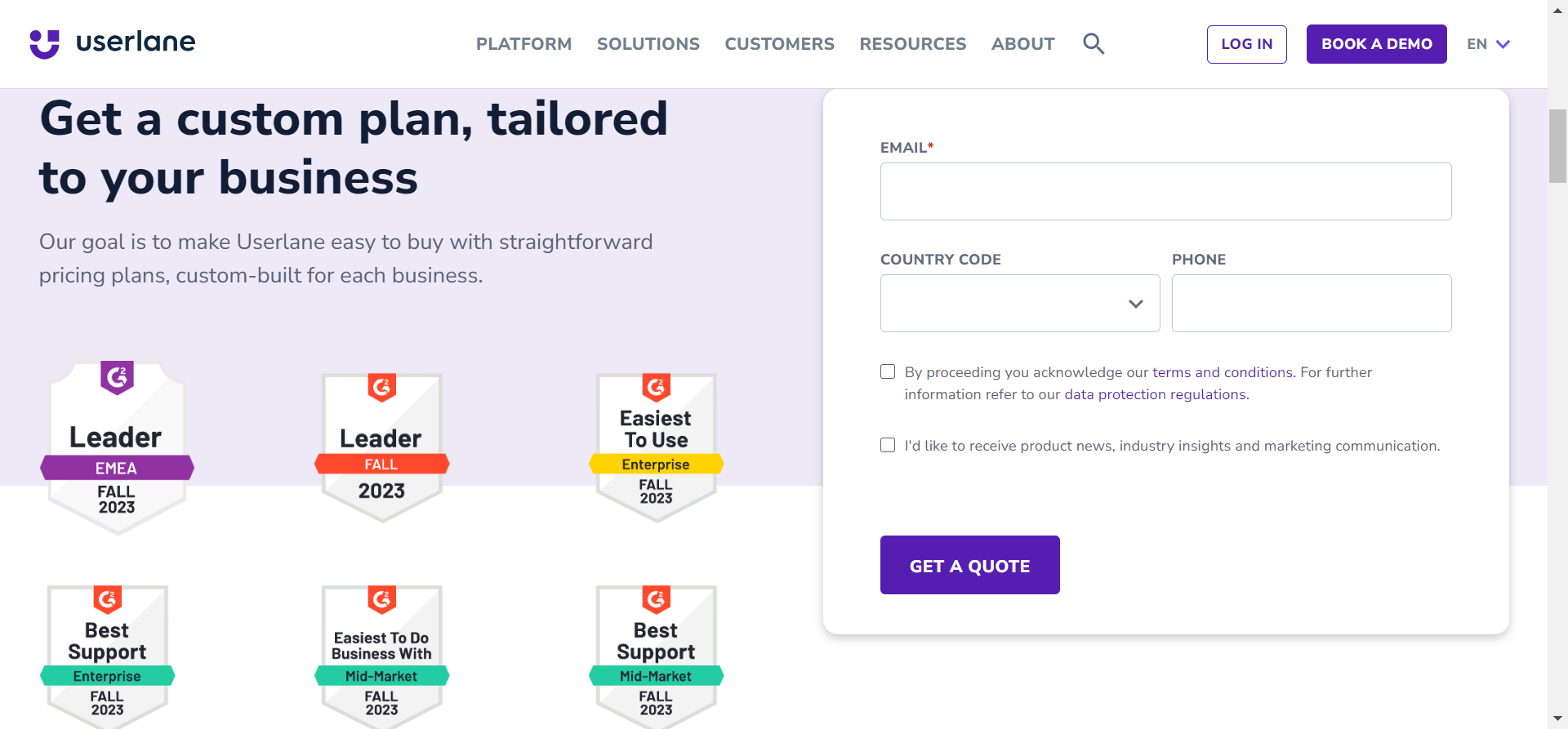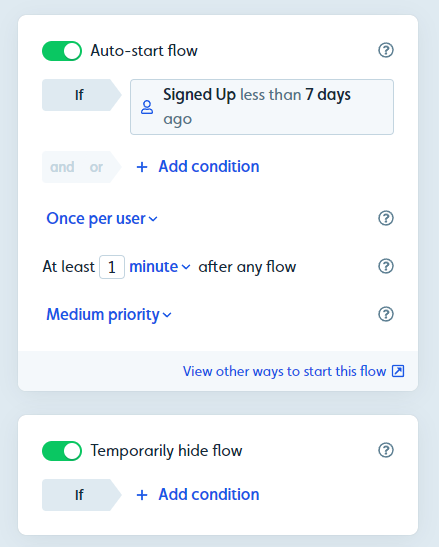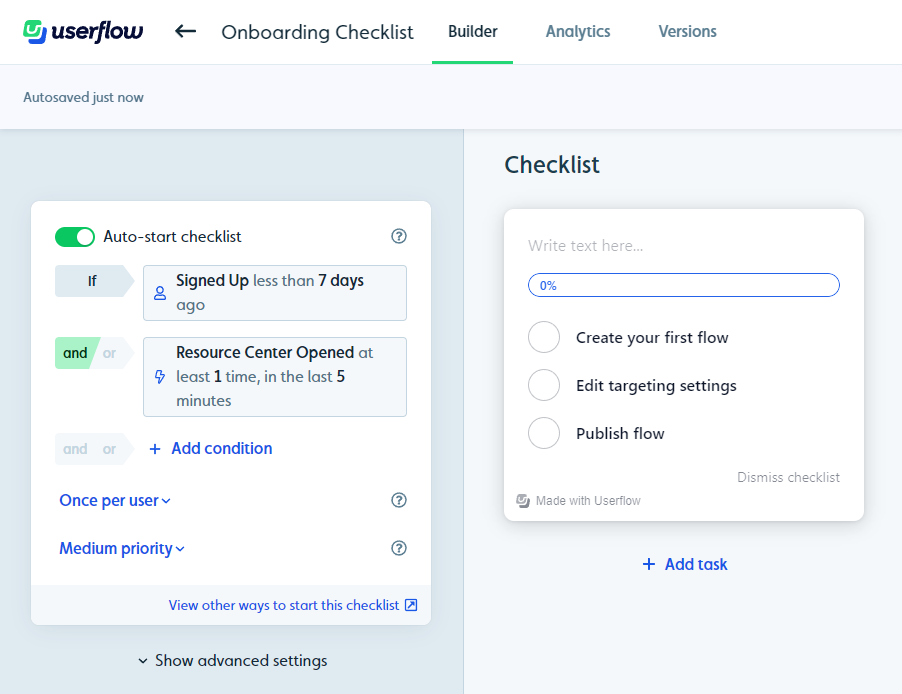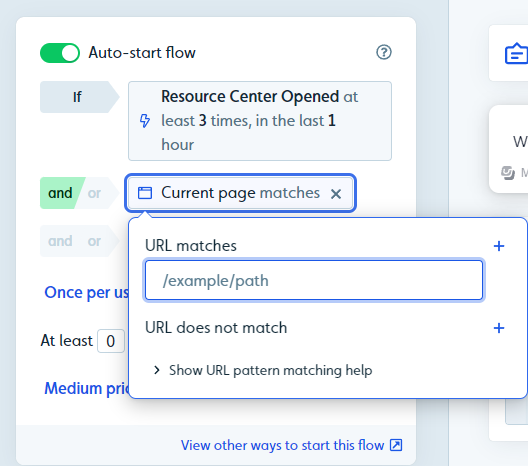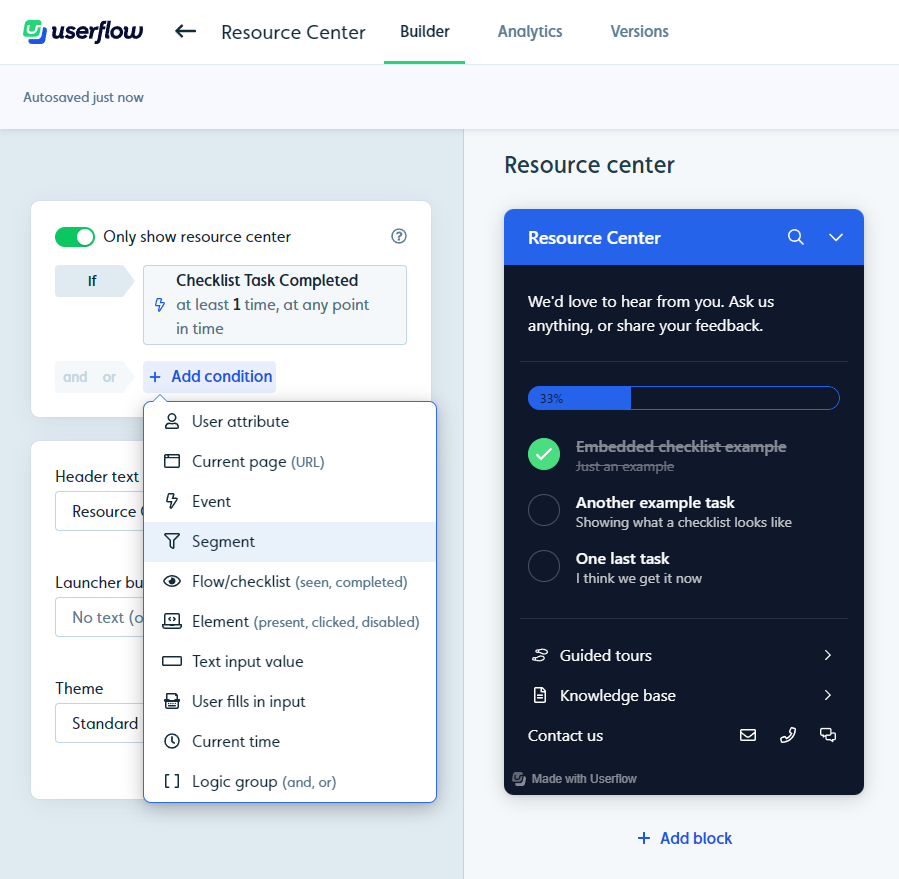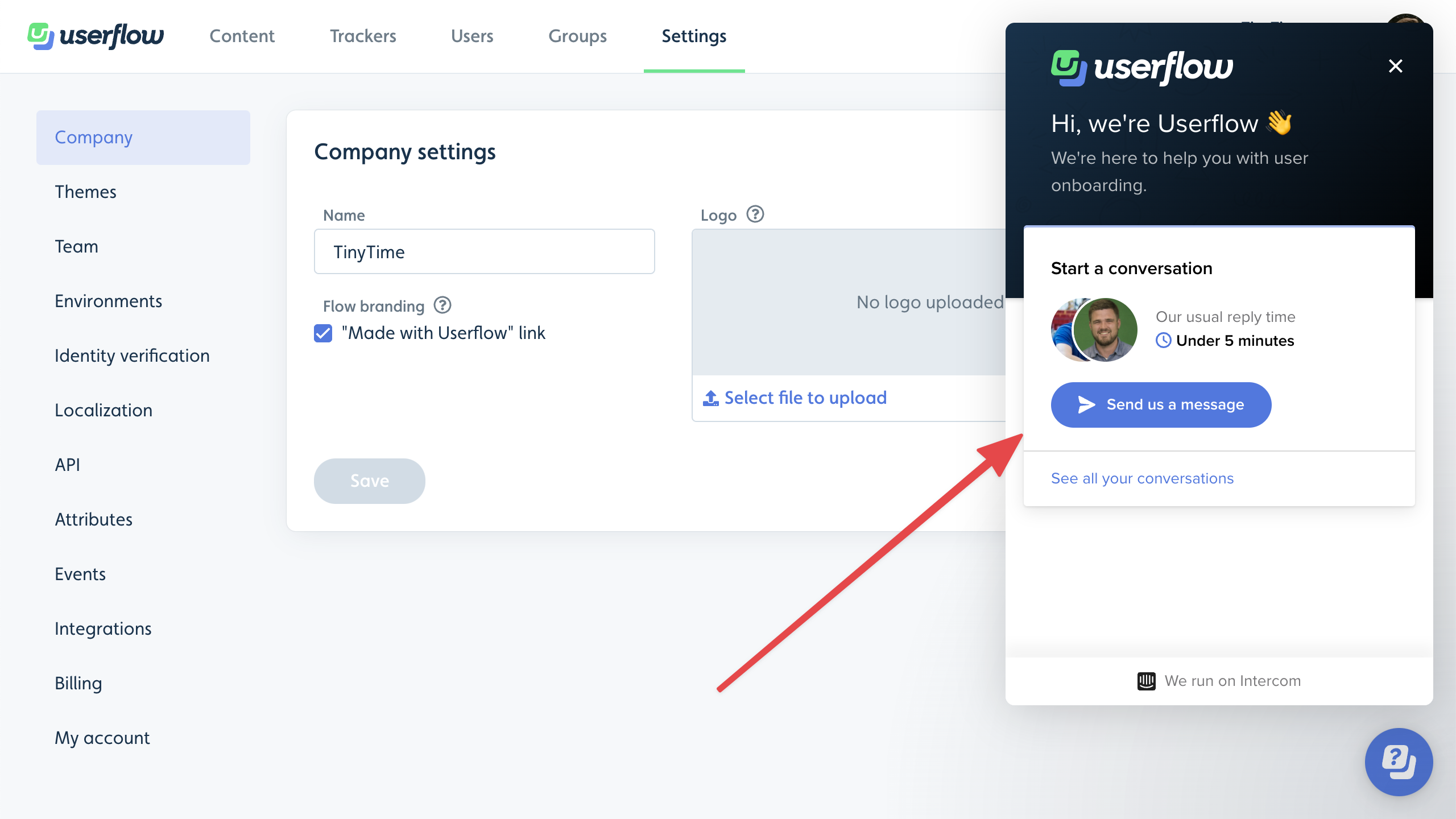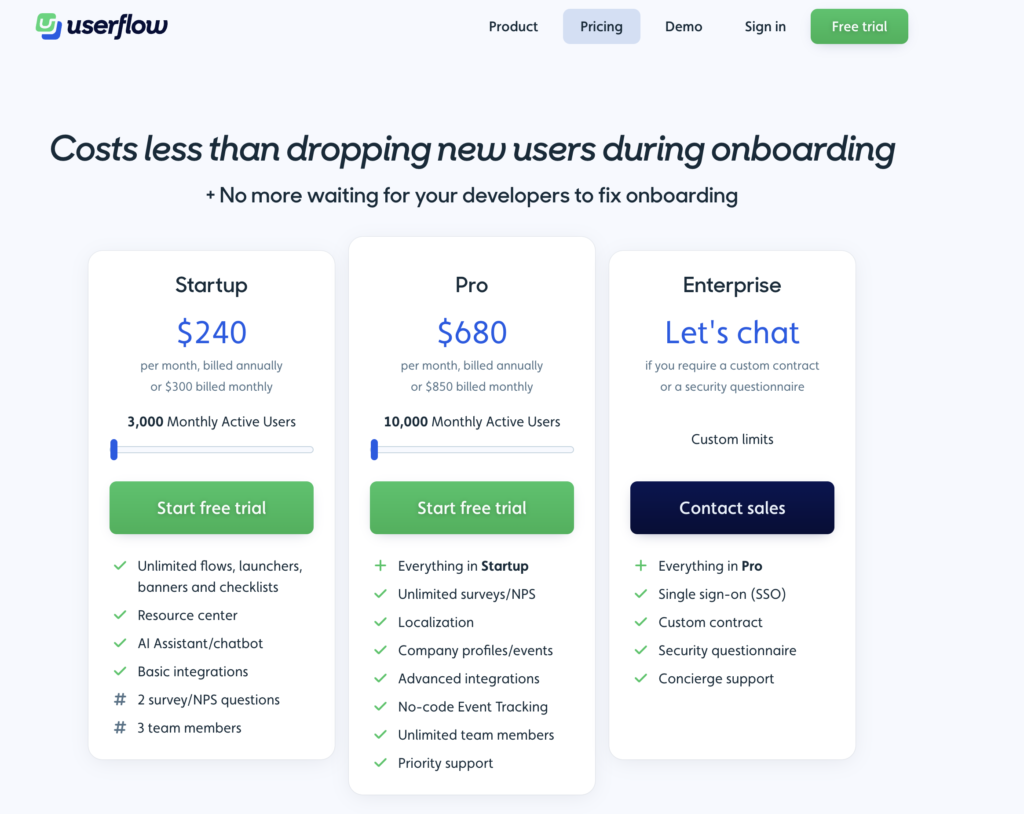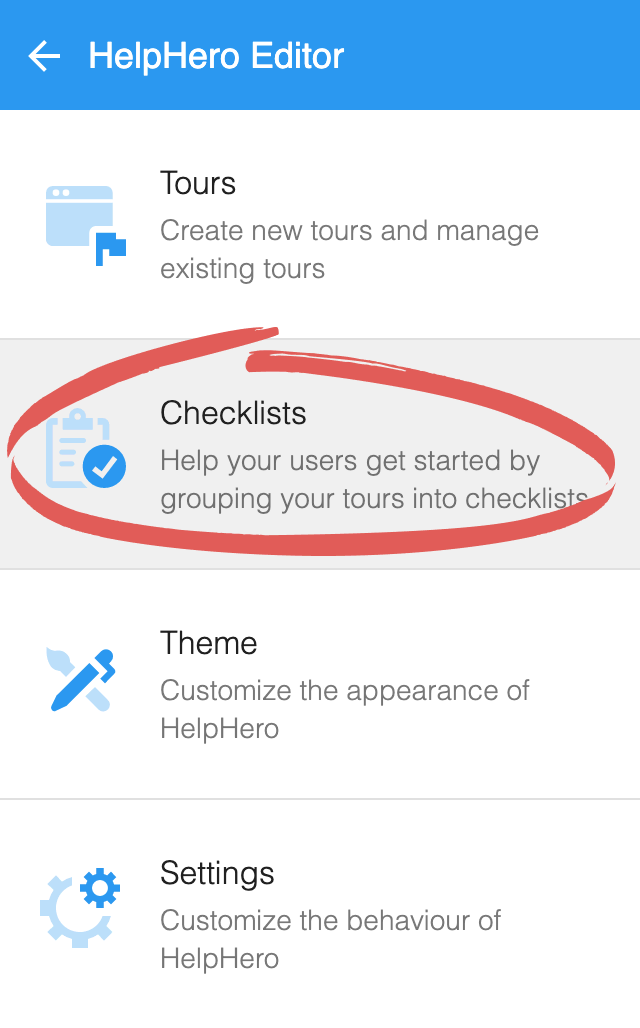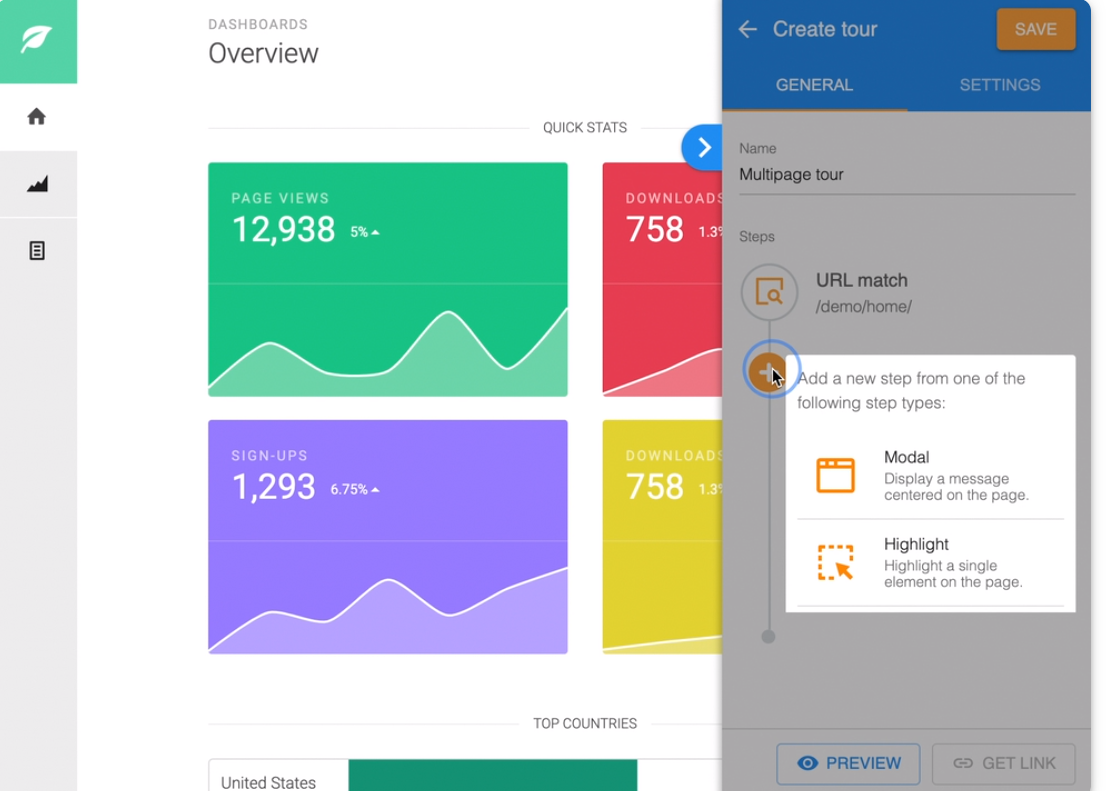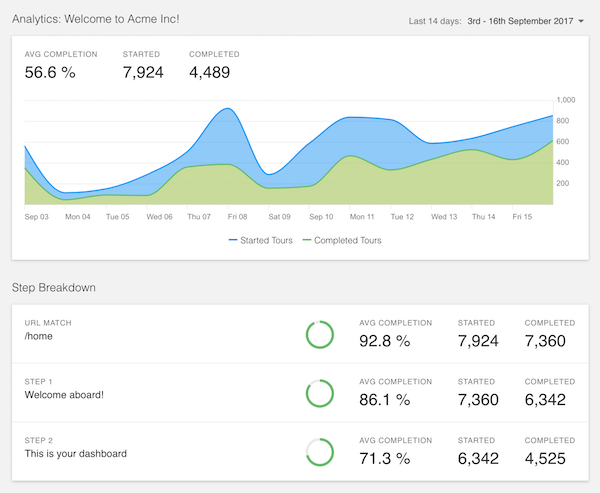
Try Userpilot Now
See Why 1,000+ Teams Choose Userpilot

Which UserIQ alternative should you consider?
- UserIQ is a customer success platform that helps uncover health insights, predict user hurdles, and simplify account management.In addition, UserIQ poses features like a customer health dashboard, product intelligence, plays, and in-app engagements such as user onboarding tours. These features help you predict user behavior, act on it, and create winning experiences.According to online resources, UserIQ, a tool that was widely utilized by many startups to enhance their customer success initiatives, ceased its operations on May 10, 2022. Despite its shutdown, the company’s online presence remains, allowing us to gather information about its features and functionality.
- Here are three succinct reasons why you might consider an alternative to UserIQ:
- Budget Constraints: If you’re operating on a tight budget, alternatives may offer more cost-effective pricing options, making them a better fit for small startups or businesses with limited resources.
- Onboarding Tour Limitations: If you are looking for features like onboarding checklists and more comprehensive product guide functionality, you might consider using a tool like Userpilot.
- No Free Trial: Most SaaS product teams might want to experiment with a tool before swiping a card for it. UserIQ doesn’t offer a free trial so you can’t test it before making a decision.
- Here are the top UserIQ alternatives you can consider:
- Userpilot is a product growth platform that drives user activation, feature adoption, and expansion revenue. It also helps product teams collect user feedback, streamline onboarding, and gather actionable insights from analytics. With Userpilot, you’ll be able to track both product usage and user behavior to get a holistic view of how customers use your product — which will guide future development, improve the user experience, and inform your growth efforts.
- Userlane is a no-code digital adoption platform used to measure how employees use applications, identify areas for improvement, and offer real-time guidance directly within any application. In addition, it allows you to get a real-time view of digital transformation progress in your organization. You can now delve deeper into user behaviors across different applications and analyze engagement levels so you can optimize user experiences.
- Userflow is a user onboarding solution centered around building in-app flows and guides quickly and seamlessly. It helps product teams onboard new users, creates guides/checklists, and surveys customers to gather valuable feedback. Each flow has its own analytics that shows how many views each step of a funnel gets and what percentage of users end up seeing a particular stage. Lastly, the flow builder (Userflow’s main feature) also has versioning capabilities so you can restore your flows to a previous variant.
- HelpHero is a tool that enables businesses to build interactive, easy-to-follow product tours that help engage users from day one and speed up feature adoption quicker than ever. In addition, with HelpHero, you can easily create and customize walkthroughs without coding. You can use it to ensure users know what’s new and how to use it. The result – is less frustration and confusion and higher user adoption and retention.
- Interested in driving product growth without coding? Book a demo to see how we can help!
What are the main use cases for UserIQ?
Understanding the core functionalities and use cases of UserIQ is crucial for deciding whether or not it’s the right choice for you.
Without further ado, let’s see the primary scenarios where UserIQ is useful for your SaaS business!
UserIQ for user onboarding
With UserIQ, your customer success team has the wingman it deserves. You can start the relationship with guided onboarding tours, send tooltips to select users, or tell them about the newest feature with a branded announcement.
- Onboarding Tours: With UserIQ, you won’t need any of that to set up intuitive product tours. This high-tech solution allows you to build targeted, step-by-step usage guides that can be accessed on-demand.
- Targeted Segmentation: Targeted product tours from UserIQ call attention to the most relevant features thanks to user segmentation options such as the user’s job role, user or account lifecycle stage, user or account data in Salesforce, account type, payment status, interactions with other features, or login activity.
UserIQ for product analytics
SaaS product analytics helps you track the ‘why,’ ‘how,’ and ‘when’ of customer-product interactions.
- In-Depth Analytics: It tracks key metrics such as feature adoption, daily active time, user engagement, and more. This level of insight allows you to identify which product features are popular, which ones need improvement, and how users navigate your software. Armed with this data, you can make informed decisions to enhance your product’s functionality and user experience.
- Segmentation Options: UserIQ’s product analytics tools enable you to segment your user base based on various criteria, including behavior, demographics, and more. With this segmentation, you can send targeted in-app messages, notifications, and emails to specific user groups.
UserIQ for self-service support
The self-service methodology focuses on giving users the tools necessary to solve some problems independently without having to reach out to support agents. This often includes elements like knowledge bases, chatbots, and interactive walkthroughs.
The only self-service support system UserIQ can offer you is onboarding tours.
Elements like onboarding surveys, welcome screens, and widgets that pop up when a user navigates to a page for the first time can come together to form a comprehensive self-serve onboarding experience. Userpilot makes it easy to implement a help center in an effective yet code-free manner.
What are the pros and cons of UserIQ?
Pros of UserIQ?
UserIQ aims at improving the health usage of customers on your product. Here’s a list of the amazing features it offers:
- Easy In-App Feedback Collection: UserIQ makes creating micro-surveys within your application easy, enabling you to gather instant feedback from your users. This can be invaluable for understanding user needs and improving your product.
- Customer Health Score Dashboard: UserIQ provides a Customer Health Score dashboard, which helps you assess churn liability. This feature allows you to identify at-risk customers and take action to retain them proactively.
- Onboarding Improvement: UserIQ offers simple walkthroughs that can enhance the onboarding experience for your users.
- Extensive Third-Party Integrations: UserIQ supports a wide range of third-party software integrations, enabling you to centralize your data in one location.
Cons of UserIQ?
UserIQ has some great features. However, there are still some loopholes:
- Performance Issues: Bugs and performance issues keep repeating, and the support system is low compared to other tools. There is no availability of a knowledge base documentation on how to use some features.
- Limited UI Patterns: Some of the UI patterns, like hotspots and tooltips, aren’t as functional as users might like. Offers only interactive walkthroughs, known as lanes.
- Doesn’t Support Chrome Extension: Works only in the dashboard and can’t be launched in a Chrome extension.
What do users say about UserIQ?
“Bringing Insights Like We Never Had Before!”, Game changer, simple and easy to use — these and many more phrases are used by UserIQ customers to describe the excellent benefits of the product.
The UserIQ platform is an easy-to-use tool that doesn’t require a lot of time or a dedicated admin to provide value. The customer success team is friendly and attentive and is always willing to assist with any issues we may have. Specifically, the health score dashboard gives us an easy-to-understand overview of the health of our customers but also allows us to drill down using a variety of filters to see specific issues that need to be addressed.

UserIQ did a good job for what it is, wasn’t a hard integration to our platform but we ultimately ended up looking for another system.
Does UserIQ fit your budget?
From some observations and per G2, UserIQ has not provided pricing information for this product or service. This is a not-so-good common practice for software sellers and service providers.
3 Reasons why you might need a UserIQ alternative
Here are three succinct reasons why you might consider an alternative to UserIQ:
- Budget Constraints: If you’re operating on a tight budget, alternatives may offer more cost-effective pricing options, making them a better fit for small startups or businesses with limited resources.
- Onboarding Tour Limitations: If you are looking for features like onboarding checklists and more comprehensive product guide functionality, you might consider using a tool like Userpilot.
- No Free Trial: Most SaaS product teams might want to experiment with a tool before swiping a card for it. UserIQ doesn’t offer a free trial so you can’t test it before making a decision.
Better alternatives to UserIQ
Considering alternative options to UserIQ can often lead to discovering more tailored solutions that better suit your needs. Here are the top UserIQ alternatives you can consider:
- Userpilot is a product growth platform that drives user activation, feature adoption, and expansion revenue. It also helps product teams collect user feedback, streamline onboarding, and gather actionable insights from analytics. With Userpilot, you’ll be able to track both product usage and user behavior to get a holistic view of how customers use your product — which will guide future development, improve the user experience, and inform your growth efforts.
- Userlane is a no-code digital adoption platform used to measure how employees use applications, identify areas for improvement, and offer real-time guidance directly within any application. In addition, it allows you to get a real-time view of digital transformation progress in your organization. You can now delve deeper into user behaviors across different applications and analyze engagement levels so you can optimize user experiences.
- Userflow is a user onboarding solution centered around building in-app flows and guides quickly and seamlessly. It helps product teams onboard new users, creates guides/checklists, and surveys customers to gather valuable feedback. Each flow has its own analytics that shows how many views each step of a funnel gets and what percentage of users end up seeing a particular stage. Lastly, the flow builder (Userflow’s main feature) also has versioning capabilities so you can restore your flows to a previous variant.
- HelpHero is a tool that enables businesses to build interactive, easy-to-follow product tours that help engage users from day one and speed up feature adoption quicker than ever. In addition, with HelpHero, you can easily create and customize walkthroughs without coding. You can use it to ensure users know what’s new and how to use it. The result – is less frustration and confusion and higher user adoption and retention.
Let’s see the features and functionalities of these tools for different use cases!
UserIQ vs Userpilot
There are many ways why Userpilot is different (and in a lot of ways better!) from UserIQ. Let’s explore the features of Userpilot, how it’s better than UserIQ, and how it may fall short too.
Userpilot for user onboarding
User onboarding is a crucial part of the customer journey as it speeds up the adoption process and increases retention rates. Onboarding is one of Userpilot’s core use cases along with product growth analytics and user feedback, so it has plenty of features that you can utilize.
Here are some Userpilot features you can use when onboarding new users:
- No-code builder: Creating flows with Userpilot is as simple as installing the Chrome extension, selecting the UI patterns you’d like to use, and then editing the content/settings to suit your use case. You can also use templates to create modals, slideouts, tooltips, and driven actions.
No-code flow builder in Userpilot. - Native tooltips: Userpilot lets you create native tooltips that show up when users hover over an element or click on an information badge. Since these native tooltips attach to the element itself, they aren’t page-dependent and will show up on any screen where that element is visible.
Build native tooltips with Userpilot. - Advanced flow settings: With advanced condition settings, you can decide when, where, and who you’ll be triggering your onboarding flows. This helps you create contextual and personalized onboarding experiences that drive engagement and adoption.
- Onboarding engagement analytics: You can easily assess the impact of your onboarding flows, guidance, etc. by analyzing the engagement rate of tooltips, interactive walkthroughs, checklists, etc. In addition, you can also build reports (funnels, paths, etc.) or dashboards to track your core onboarding metrics i.e. activation, stickiness, drop-offs, etc.
Userpilot for product analytics
Product analytics lets you collect and analyze data about how users interact with your product so you can extract actionable insights. Userpilot lets you look at granular product analytics, such as which features have the highest adoption rates, and big-picture insights like trend reports. Here are Userpilot’s top product analytics features:
- Feature tagging: Userpilot’s click-to-track feature tagger lets you view how many times a feature has been used and by how many users to measure its adoption. Users on the Starter plan can add up to 10 feature tags while those on the Growth or Enterprise tier can create unlimited tags.
No-code feature tags in Userpilot. - Event-tracking: Alongside no-code feature tags for feature engagement tracking, you can also track other events unique to your product using event-tracking. You can also create a group of events to track a specific process i.e. onboarding, subscription, etc.
Create tracked events to monitor server-side data. - Trends and funnels: Userpilot’s trends and funnels report lets you extract actionable insights from big data. You’ll be able to see which stage of an onboarding/conversion funnel most users drop out on and create trend reports with detailed breakdowns by user or period.
Example of a trend report in Userpilot. - Retention tables: This lets you gauge product performance – how effective it is at retaining users using cohort tables and retention curves.
- Paths: You can generate and access path reports directly within the reporting builder in Userpilot, alongside funnels, trends, and retention reports. With Paths, you can have an overview of how users navigate your product features – offering invaluable insights into their interactions with your products.
- User & Company profiles: Here you can view data related to a certain user/company to gain insights into their behavior and improve the overall user tracking experience. This helps you understand how they engage with your product or platform, better identification of areas of improvement, and tailor their offerings more effectively.
User profile with top event data that provides insights into what feature they regularly engage with. - Analytics dashboards (Product Usage, New Users Activation, Core Feature Engagement, User Retention, etc.): These dashboards enable you to keep track of your key product performance and user behavior metrics at a glance, without any technical setup required.
- Analytics integrations: Userpilot integrates with some of the most popular analytics tools like Amplitude, Mixpanel, Segment, Google Analytics, and more. This makes it possible to sync product analytics both ways between the tools in your tech stack (two-way integration is only available for Hubspot at the time of writing, more to come).
Userpilot for self-service support
Here’s how you can use Userpilot to create a self-service customer experience:
- No-code builder: Userpilot’s no-code resource center lets you add modules without writing a single line of code. Module options include links, videos, flows, custom JavaScript functions, and checklists. You can also group modules into sections to help users navigate the resource center.
Add different types of content to your resource center. - Module segmentation: Userpilot’s segmentation settings let you hide or show specific modules within your resource center based on audience settings. This makes it possible to create modules for different user segments and hide resources that aren’t relevant to other users.
Help module visibility condition settings. - Resource center analytics dashboard: The dedicated analytics dashboard helps you see how many unique visitors your resource center gets, how many modules have been clicked, the overall click rate across your user base, and popular search terms. This will make it easier to gauge resource center performance and identify if anything is missing from your resource center.
Resource center content analytics in Userpilot.
Pricing of Userpilot
Userpilot offers flexible pricing based on your monthly active users (MAUs). Plans start at $299 per month for smaller teams and scale as your user base grows.
Below are the pricing tiers you can choose from:
- The Starter plan begins at $299/month (billed annually) for up to 2,000 monthly active users. It includes in-app user engagement, usage trend analysis, NPS surveys, and essential product analytics—ideal for mid-market SaaS teams getting started.
- The Growth plan offers custom pricing and adds advanced analytics, retroactive event auto-capture, in-app surveys, session replay, and more. It’s the most popular choice for growing teams that need deeper insights and scale.
- The Enterprise plan offers custom pricing and includes everything in Growth, plus bulk data handling, custom roles and permissions, SOC 2 Type 2 compliance, and enterprise-level support.
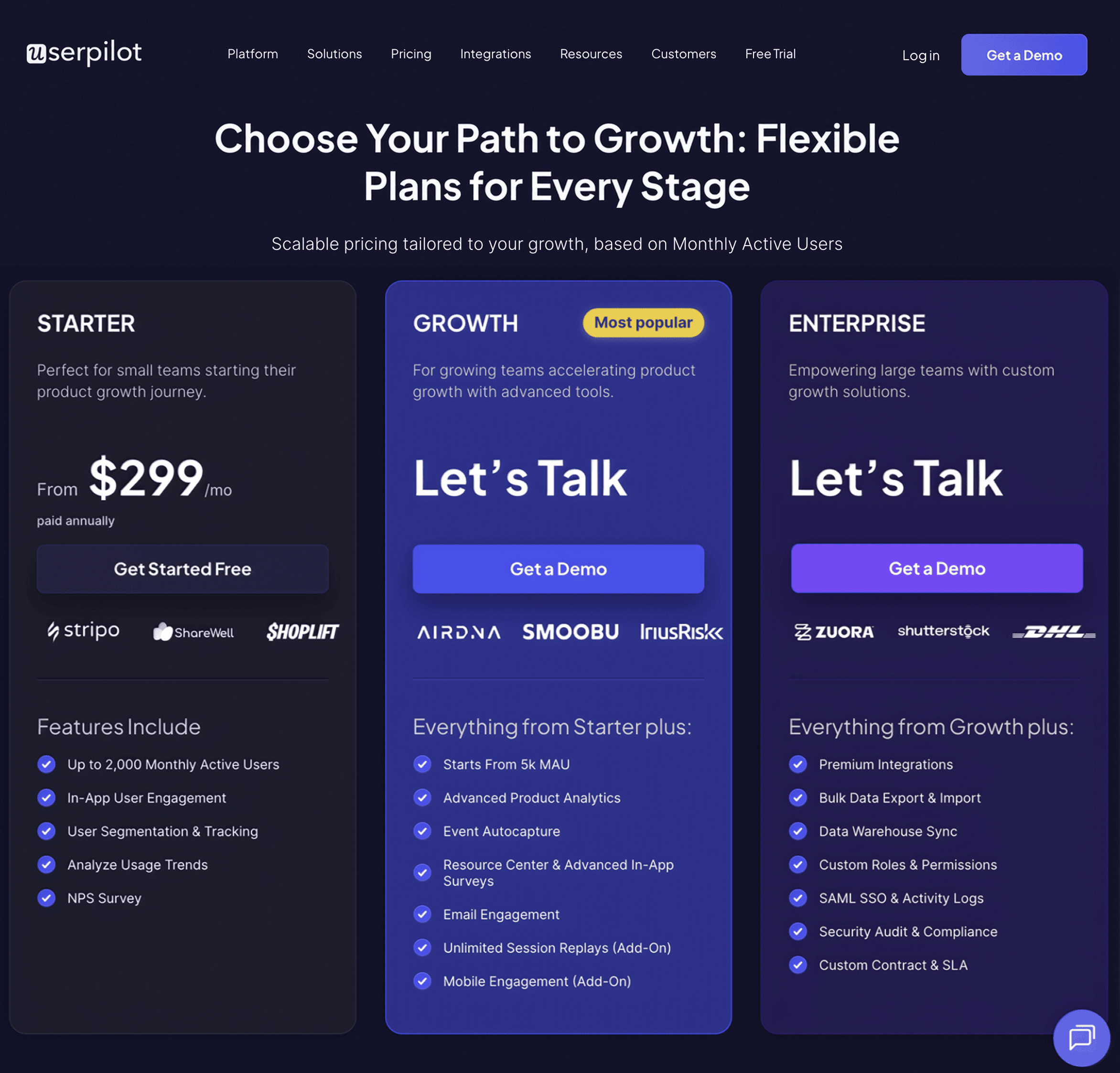
UserIQ vs Userlane
There are many ways how Userlane is different (and in a lot of ways better!) from UserIQ. Let’s explore the features of Userlane, how it’s better than UserIQ, and how it may fall short too.
Userlane for user onboarding
Teams use Userlane to ditch the stress of manual onboarding. The platform allows you to build a customized and interactive onboarding dashboard for each software, promoting an easy software onboarding experience every time.
Here are some ways Userlane helps with onboarding:
- Digital adoption solution: Userlane has a digital adoption solution that provides on-screen, step-by-step guidance to your users. This way, users can navigate your software with ease. You can also create an interactive in-app guide that walks users through tasks, so there’s no steep learning curve or need for external training materials.
- User-specific communication: User onboarding isn’t one-size-fits-all. Everyone’s needs are different. You can customize and improve their walkthroughs and communication based on the user’s behavior and software. Personalized communication makes it easy to remember how to use the features and get help.
- Comprehensive Analytics: Userlane has two applications for user analytics: HEART and Content analytics. HEART is Userlane’s premiere model to monitor software adoption across enterprise apps. The model shows if an application delivers the expected value. And highlights areas teams can improve and optimize. Content Analytics adds a layer of interactivity for guided learning within the platform. This feature allows teams to create guides, tips, and Pop-Ups and host NPS surveys.
Userlane for product analytics
Teams perform product analytics to track the performance of the software they build.
While Userlane excels at employee onboarding and digital adoption, it doesn’t serve as a product analytics tool.
Userlane users can access surveys to identify and address software-related issues, ultimately improving performance.
For comprehensive product analytics, consider UserGuiding or Userpilot.
Userlane for self-service support
It’s one thing to build a great product; it’s another thing to build a system of quality support for your users. They’re functional and emotional experiences can determine customers’ overall satisfaction.
What does self-service support entail?
It entails building solutions that are easily accessible and discourage customers from immediately seeking one-on-one support from an agent.
Here are the features of Userlane for self-service support:
- Interactive Onboarding Guides: Userlane provides step-by-step on-screen guidance, ensuring users understand how to use software or platforms without needing external help.
- Real-time Support: Instead of searching through FAQs or documentation, users receive immediate help directly within the application, reducing the need for support tickets.
- User Analytics and Feedback: This allows you to understand where users might get stuck or confused, enabling continuous improvement of the user experience and promptly addressing potential support issues.
Pricing of Userlane
Userlane’s pricing plan is structured in a customizable pattern. This means you need to get a custom quote to know the plan that fits your brand’s purpose based on the level of your SaaS and the number of acquired customers.
UserIQ vs Userflow
There are many ways in which Userflow is different (and in a lot of ways better!) from UserIQ. Let’s explore the features of Userflow, how it’s better than UserIQ, and how it may fall short too.
Userflow for user onboarding
Userflow positions itself as a user onboarding tool, so most of its features are targeted towards that use case. Here are the Userflow features and functionalities that you can use to onboard new users to your product:
- Flows: In-app flows are the primary user onboarding feature that Userflow offers. You’ll be able to add steps like speech bubbles, tooltips, modals, or hidden steps used as triggers. You can also select whether a step is mandatory for flow completion and change the size or theme if needed.
- Targeting: You can create personalized and contextual onboarding flows with Userflow due to its auto-start settings. You can add trigger conditions like what page users are on, which segment they’re in, when they signed up, which elements they’ve clicked, and which flows they’ve seen.
- Checklists: Userflows lets you create checklists with an unlimited number of tasks, trigger them if certain targeting conditions are met, configure whether tasks need to be completed in a specific order, and prevent users from dismissing the checklist if needed.
Userflow for product analytics
Product analytics are essential for optimizing user acquisition, activation, and retention. Unfortunately, Userflow doesn’t have any native product analytics capabilities as it only provides data for how users interact with your flows, checklists, launchers, resource centers, and NPS surveys.
One workaround would be to integrate your Userflow account with analytics tools like Amplitude, Mixpanel, or Heap. However, this may not be very cost-effective as you’d need to pay extra to subscribe to these third-party analytics tools.
Note: Advanced integrations (the ability to build custom integrations between Userflow and a third-party app) are locked behind the Pro plan which starts at $680/month and is almost 3x more expensive than Userflow’s entry-level Startup plan.
Userflow for self-service support
Self-service support decreases ticket volume and increases satisfaction levels. Userflow can aid self-service support through flows that teach users about a specific feature, checklists that guide them to their next step, and resource centers with documentation.
Here are the Userflow features you can use to build a self-service customer experience:
- In-app guides: Userflow lets you create in-app flows with tooltips, modals, and speech bubbles that guide users. You can even trigger flows whenever certain conditions are met, such as a user opening the resource center in the past hour while on a specific page.
- Onboarding checklists: New users are the segment most likely to need support. Userflow lets you create onboarding checklists with unlimited tasks. You’ll also be able to use the completion of checklists as a condition to trigger in-app flows or show/hide certain resource center blocks.
- Resource centers: Userflow in-app resource centers can include blocks like checklists, help articles, free-form content, checklists, announcements, and flow triggers. You can also style the resource center with custom themes or hide/show blocks when specific conditions are met.
- Live chats: You can leverage Userflow integrations like Crisp, Zendesk, Freshchat, Help Scout, HubSpot, or Intercom to give customers an option to connect to an actual human if self-service resources don’t solve their problem.
Pricing of Userflow
Userflow has three paid plans — Startup, Pro, and Enterprise — that start at $240 and increase in price as your MAUs grow. For example, the Startup plan costs over $1,000/month once you reach 50,000 MAUs which could make it difficult for products with thousands of freemium users to scale.
Here’s a closer look at each of Userflow’s plans:
- Startup: Userflow’s entry-level Startup plan starts at $240/month for 3,000 MAUs. Due to the survey and team size limitations of the Starter plan, you’ll likely need to upgrade to Pro at some point or purchase additional seats for $20/month each.
- Pro: Userflow’s Pro plan costs almost three times as much at $680/month for 10,000 MAUs. It contains essential features like localization, advanced integrations, event tracking, and unlimited surveys so you’ll probably need to upgrade to this tier eventually to continue growing.
- Enterprise: Userflow’s Enterprise tier is priced on a quote basis and can accommodate a custom number of MAUs. It comes with benefits like concierge support, security questionnaires, custom contracts, and single sign-on (SSO) features.
UserIQ vs HelpHero
There are many ways how HelpHero is different (and in a lot of ways better!) from UserIQ. Let’s explore the features of HelpHero, how it’s better than UserIQ, and how it may fall short too.
HelpHero for user onboarding
With HelpHero, you can create interactive, easy-to-follow product tours that help users get started and adopt new features quicker than ever.
Here’s a brief overview of HelpHero’s use case for user onboarding:
- User Onboarding Checklists: HelpHero’s checklists are a powerful tool that can help boost user onboarding. It lets you display a list of tasks for users to accomplish, making it even easier and quicker to onboard and engage new users to your app.
- Modals: HelpHero’s modals play a crucial role in product tours by providing interactive, contextual guidance. They enable users to ‘learn as they go’, directly within the product environment.
There are still other great features like multiple user onboarding UI patterns – on Userpilot, you can create tooltips, modals, slideouts, driven actions, banners, and hotspots. Each of them can be used individually or combined into a personalized onboarding experience.
Sign up for the Userpilot demo today.
HelpHero for product analytics
HelpHero’s analytics helps you understand how viewers are interacting with your tours, so you can identify opportunities for improving user experience.
- Automatic Tracking: HelpHero’s built-in analytics automatically track key metrics such as the number of tours started, tours completed, and the progress users make through the tours.
- Integration with External Analytics Tools: For those who prefer external analytics providers like Google Analytics or Mixpanel, HelpHero supports integration through its JavaScript API.
There are other important features like creating feature usage automatically. With Userpilot product analytics, you can make better decisions with actionable product analytics — understand user behavior across the product journey with powerful custom reports, and answer every product question. Try product analytics on Userpilot.
HelpHero for self-service support
Implementing a self-service approach will help you scale up without spending a fortune to maintain sufficient support quality.
Guided tours serve as a primer that introduces users to how a product works for the first time on HelpHero.
Outside of that, there are no self-help and knowledge repository integrations. Below is the little HelpHero offers in terms of self-service support:
- Interactive Walkthroughs: HelpHero allows the creation of step-by-step guides within the app, leading users through various functions and features. These walkthroughs can be customized and triggered based on user actions.
- Tooltips: It offers tooltip support, which provides contextual information when a user hovers over or clicks on specific elements in the app. This is useful for explaining buttons, features, or UI elements that take time to be intuitive.
- Hotspots: HelpHero enables the integration of hotspots within the app’s interface. These attention-grabbing indicators prompt users to explore or discover new features often used to highlight updates or underused aspects of the application.
However, HelpHero doesn’t provide an in-app resource center, necessary for self-service support. If you are looking for a better option to optimize your support, you should look into alternatives, such as Userpilot.
Pricing of HelpHero
HelpHero’s pricing plan is based on the number of Monthly Active Users (MAUs). Here’s an overview of the different pricing plans, including the free trial:
- HelpHero free trial: free 14-day trial, no credit card required.
- Up to 1000 MAU — $55
- Up to 2500 MAU — $115
- Up to 5000 MAU — $179
- Up to 10000 MAU — $249
- Up to 20000 MAU — $299
- If you have more than 20,000 Monthly Active Users, you have to contact them.
Conclusion
As you can see, there are many different competitors and alternatives to UserIQ. We’ve discussed a few above – but which one is the best?
The answer is “it depends” – but we strongly believe that if you’re a mid-market SaaS company looking for a great user onboarding and product analytics tool, Userpilot is the best option for you.
Hopefully, you found this post helpful. And if you need any help with how Userpilot is different, schedule a demo to get started!

